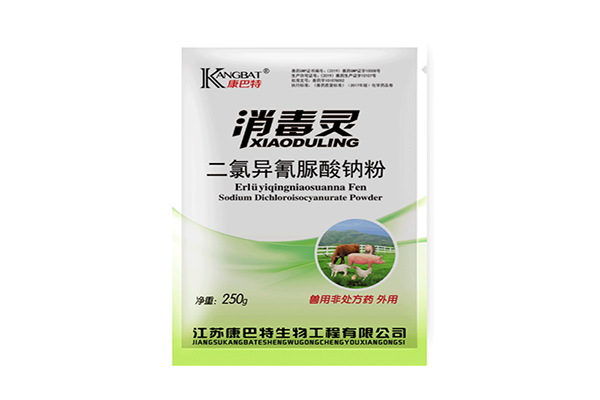Disinfectant is like the evil forces. It is always safe for the guards on and off the field. The professional knowledge of veterinary disinfectant is easy to change, and the decision to achieve the actual effect of disinfection will be harmful, especially for some old people. Yes, if the disinfection process is not done well, the probability of disease outbreaks increases sharply, which seriously affects the normal development of all breeding, then, what are the veterinary disinfectants?

Suzhou veterinary disinfectant is a key special tool to eliminate microorganisms and avoid and solve infectious diseases of poultry and livestock. Below are several types of key universal disinfectants.
1. Sodium hydroxide (caustic soda)
Sodium hydroxide solution is milky white solid and can kill germs. The 2%-5% sodium hydroxide solution hot water solution is mostly used for disinfection of poultry houses and places where viral infectious diseases (such as chicken plague) have occurred. Mixing 2% aqueous sodium hydroxide solution and 5% lime milk will have a stronger disinfection effect. The sodium hydroxide solution is highly corrosive. When disinfecting the shed, first drive the livestock out, clean the feeding trough with cold water after disinfection, and then let the livestock out of the pen.
2. Potassium permanganate (gray manganese oxide)
The gray-black crystal of potassium permanganate solution is an oxidizing agent, in addition to its antibacterial effect, it can also be used to prevent corrosion. Veterinary Disinfectant Company introduces that 0.05% to 0.1% potassium permanganate solution can clean the inside of livestock's oral cavity, treat uterine and vaginal inflammation, and can also be used to disinfect livestock drinking water to prevent digestive system diseases.
3. Formaldehyde solution (formalin)
Formaldehyde solution is a liquid with no color, irritation and volatiles. It has a strong ability to eliminate bacteria, and it has a strong elimination effect on germs, pathogens and their parasite eggs and larvae. 3%-5% formaldehyde solution can be used to sterilize pens, utensils, and business incubators. This drug is very irritating, so pay attention to the safety of people and animals when applying it. The steaming method is selected, and 14mL formaldehyde solution and 79 potassium permanganate solution are used for each cubic indoor space, and the two are mixed to diffuse smoke and fumigate. The closed type can be used for disinfection of environmentally polluted sheds and incubators.
4. Cresol soap (Lysol)
The cresol soap is a light brown transparent oil liquid. Good bactericidal power, 3%-5% cresol soap can be used to disinfect poultry houses, perches, utensils and poultry manure. It can be sprayed or cleaned. The 1%-3% cresol soap solution can be used to clean and disinfect the arms of feeding staff and wounds of livestock, and it can wipe the acne of livestock scabies. If it is slightly warmer, the disinfection effect can be improved. This medicine has little irritation and is widely used.
5. Lime milk
Milk of lime is one of the common disinfectants. Configuration method: Take 2kg of quicklime powder, add 2kg of water, and stir evenly to form 12% lime milk. This kind of concentration of lime milk can be used for disinfection of shed walls and sports venues. Lime milk should be prepared immediately.
6. Vegetation grey water
Plant ash water is an alkaline solution with strong sterilization power. Configuration method: Mix the fresh grass ash with water, boil for 1 hour, and then serve. 30% of the hot vegetation and grey water can be used to disinfect chicken coops and washing utensils.